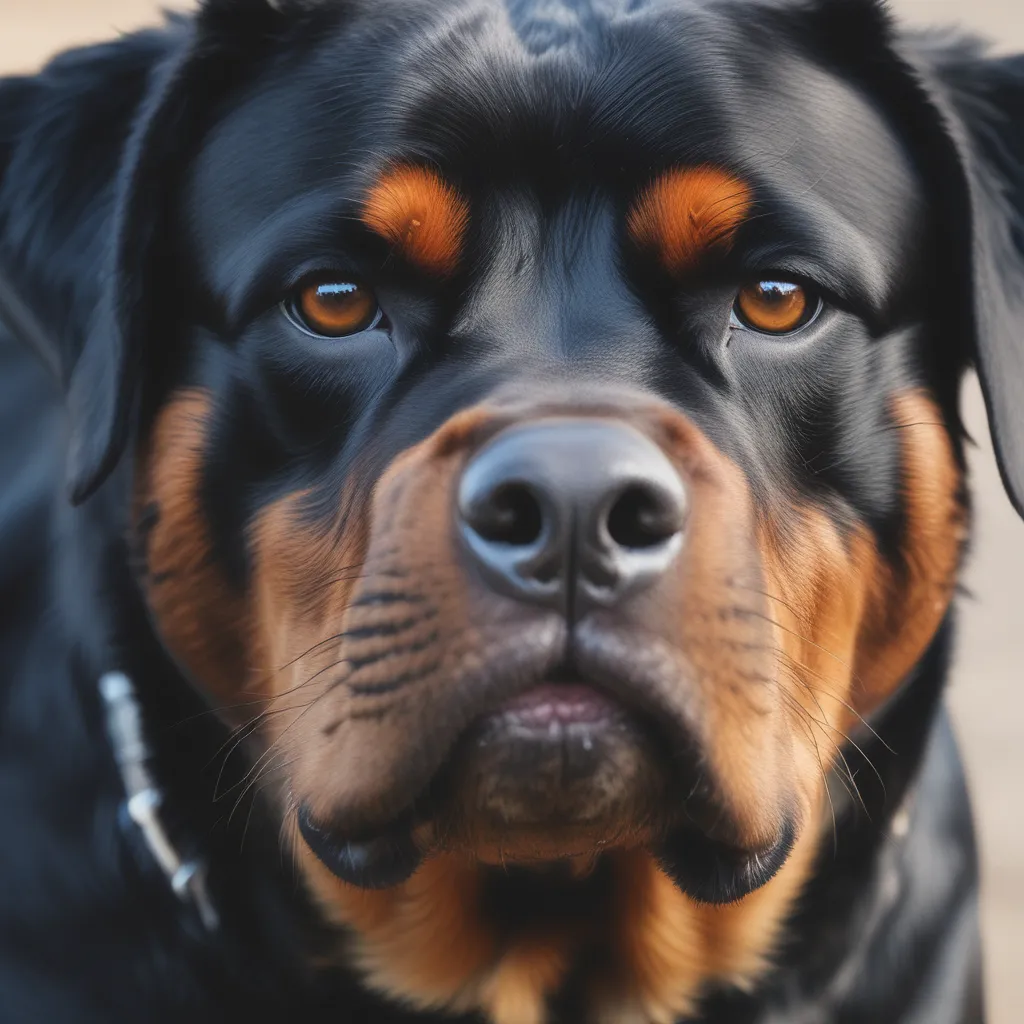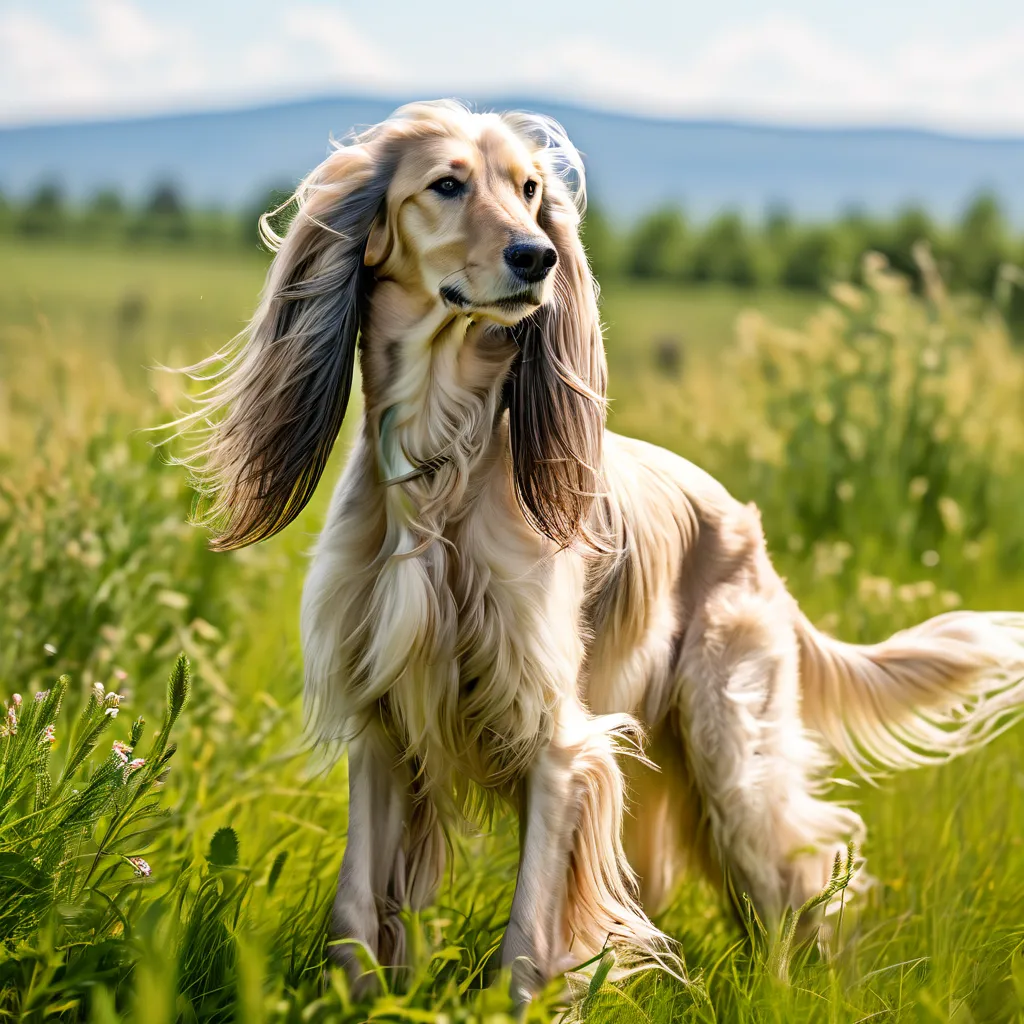Introduction
When it comes to dog breeds, one question that often sparks debate is: which breed of dog is the most aggressive? While any dog can become aggressive under certain circumstances, some breeds are more prone to aggression due to their history, temperament, and genetic makeup. According to various studies and reports, breeds like Rottweilers, German Shepherds, Dachshunds, and Chow Chows are often considered to be among the most aggressive. However, it’s essential to understand that aggression in dogs is a complex issue that cannot be attributed to a single factor. Genetics, environment, training, and socialization all play a significant role in shaping a dog’s behavior. In this article, we will delve into the world of aggressive dog breeds, exploring the reasons behind their aggression and what can be done to mitigate or prevent aggressive behavior. 
What are the Most Aggressive Dog Breeds?
When it comes to dog breeds, aggression is a complex trait that can be influenced by various factors, including genetics, environment, training, and socialization. While any dog can become aggressive under certain circumstances, some breeds are more prone to aggression due to their original purpose, temperament, and characteristics.
According to various studies and data, here are some of the most aggressive dog breeds:
- Dachshunds: Known for their bold and fearless nature, dachshunds are often reported to be aggressive towards people and other animals. Their original purpose as hunting dogs may have contributed to their aggressive tendencies.
- Rottweilers: With their powerful build and strong instincts, Rottweilers can be aggressive if not properly trained and socialized. They require experienced owners who can provide them with the necessary guidance and exercise.
- German Shepherds: As one of the most popular breeds, German Shepherds are often used as police and military dogs. However, their high energy and strong protective instincts can make them aggressive if not properly trained and socialized.
- Chow Chows: With their independent nature and strong prey drive, Chow Chows can be aggressive towards strangers and other animals. They require early socialization and consistent training to prevent aggressive behavior.
- American Pitbull Terriers: Unfortunately, Pitbulls have been associated with dog fighting and aggression. However, with proper training, socialization, and care, they can make wonderful companions.
- Cane Corsos: Originally bred as guard dogs, Cane Corsos are naturally protective and can be aggressive towards strangers. They require experienced owners who can provide them with the necessary training and socialization.
- Doberman Pinschers: With their sleek build and intelligent nature, Doberman Pinschers are often stereotyped as aggressive dogs. However, they are loyal and loving companions if properly trained and socialized.
- Rough Collies: Known for their high energy and strong herding instincts, Rough Collies can be aggressive towards other animals and people if not properly trained and socialized.
It’s essential to remember that aggression in dogs is not solely determined by breed. Any dog can become aggressive if not properly trained, socialized, and cared for. In the next section, we’ll explore the reasons behind aggression in dogs and how to prevent it.
Understanding the Reasons Behind Aggression
Aggression in dogs is a complex issue that can stem from various factors. It’s essential to understand the underlying reasons behind aggressive behavior to address it effectively. According to research, some of the most common causes of aggression in dogs include:
- Fear and anxiety: Dogs may become aggressive when they feel threatened, scared, or anxious.
- Lack of socialization: Dogs that are not socialized properly may develop aggressive behavior towards people or other animals.
- Genetics: Some breeds are more prone to aggression due to their genetic makeup.
- Pain and discomfort: Dogs in pain or discomfort may become aggressive as a way to protect themselves.
- Resource guarding: Dogs may become aggressive when protecting their food, toys, or other resources.
- Territorial behavior: Dogs may become aggressive when defending their territory or space.
- Medical conditions: Certain medical conditions, such as hypothyroidism, rabies, or neurological problems, can contribute to aggressive behavior.
- Boredom and lack of stimulation: Dogs that are bored or lack mental and physical stimulation may develop aggressive behavior.
It’s crucial to identify the underlying cause of aggression in your dog to develop an effective plan to address it. By understanding the reasons behind aggression, you can take steps to prevent or mitigate aggressive behavior in your dog.

The Role of Genetics, Environment, Training, and Socialization in Dog Aggression
When it comes to dog aggression, many factors come into play. While breed tendencies may exist, it’s essential to understand the complex interplay between genetics, environment, training, and socialization in shaping a dog’s behavior.
The Role of Genetics in Dog Aggression
Research suggests that genetics play a significant role in dog aggression, with certain breeds being more prone to aggressive behavior due to their genetic makeup. Studies have identified specific genes associated with fear, anxiety, and aggression traits in dogs. For example, the chromosome 13 risk haplotype has been linked to increased fear, anxiety, and aggression traits. Additionally, genetic predispositions can influence a dog’s temperament and behavior, making them more likely to exhibit aggressive behavior.
The Role of Environment in Dog Aggression
A dog’s environment also plays a crucial role in shaping their behavior. Environmental factors such as socialization, training, and exposure to new experiences can significantly impact a dog’s aggression levels. For instance, a dog that is under-socialized or exposed to traumatic events may become more aggressive due to fear and anxiety. On the other hand, a dog that is well-socialized and trained may be less likely to exhibit aggressive behavior.
The Role of Training in Dog Aggression
Training is another critical factor in dog aggression. A dog that is well-trained and obedient is less likely to exhibit aggressive behavior. Training can help to reduce fear and anxiety in dogs, making them more confident and calm in new situations. Conversely, a lack of training or inconsistent training can lead to confusion and frustration, increasing the likelihood of aggressive behavior.
The Role of Socialization in Dog Aggression
Socialization is a critical component of a dog’s development, and it plays a significant role in shaping their behavior. A dog that is well-socialized is more likely to be confident and calm in new situations, reducing the likelihood of aggressive behavior. Socialization can help to reduce fear and anxiety in dogs, making them more receptive to training and less likely to exhibit aggressive behavior.
In conclusion, dog aggression is a complex issue that cannot be attributed to a single factor. Genetics, environment, training, and socialization all play a role in shaping a dog’s behavior. By understanding the interplay between these factors, dog owners and trainers can take steps to reduce the likelihood of aggressive behavior and promote a more harmonious relationship between humans and dogs.
Identifying Warning Signs of Aggression and Preventing Consequences
Identifying warning signs of aggression in dogs is crucial to preventing consequences, such as bites or attacks. As a responsible dog owner, it’s essential to recognize the subtle signs of aggression to take prompt action and prevent harm to yourself, others, or your dog.
Recognizing Body Language
Dogs communicate primarily through body language, and aggressive behavior often manifests through specific postures and facial expressions. Some common warning signs of aggression include:
- Stiffening: A dog that becomes very still and rigid may be indicating aggression.
- Guttural bark: A low, threatening bark can be a sign of aggression.
- Lunging: If your dog lunges forward or charges at someone without making contact, it’s a warning sign of aggression.
- Mouthing: When a dog mouths or bites, it can be a sign of aggression.
- Avoiding eye contact: If your dog avoids eye contact by squinting, turning its head, or body away from the threat, it may be a sign of aggression.
- Yawning or licking: Yawning or licking can be a sign of anxiety or stress, which can lead to aggression.
Other Warning Signs
In addition to body language, there are other warning signs of aggression to look out for:
- Growling: Growling is a clear warning sign of aggression.
- Snapping: If your dog snaps at someone, it’s a sign of aggression.
- Baring teeth: When a dog bares its teeth, it’s a warning sign of aggression.
- Nose bumping: If your dog nose-bumps someone, it can be a sign of aggression.
Preventing Consequences
To prevent consequences, it’s essential to take prompt action when you recognize warning signs of aggression. Here are some steps you can take:
- Stay calm: Remain calm and composed to avoid escalating the situation.
- Give space: Give your dog space and allow it to calm down.
- Seek professional help: Consult with a professional dog trainer or behaviorist to address underlying issues.
- Manage situations: Manage situations that trigger aggression, such as separating your dog from other dogs or people.
By recognizing warning signs of aggression and taking prompt action, you can prevent consequences and ensure a safe and happy environment for yourself, others, and your dog.
Mitigating or Preventing Aggressive Behavior in Dogs
Preventing aggressive behavior in dogs requires a combination of proper training, socialization, and understanding the underlying causes of aggression. Here are some effective ways to mitigate or prevent aggressive behavior in dogs:
Set Consistent Boundaries
Setting consistent boundaries early on is crucial in preventing aggressive behavior. Avoid allowing behaviors like bed sharing, demanding attention, or getting into food or trash. Establishing clear rules and consequences helps your dog understand what is expected of them.
Socialization
Socializing your dog when they are young is one of the best ways to prevent dog aggression later on. A well-socialized dog is less likely to feel anxious or fearful in new situations, reducing the likelihood of aggressive behavior.
Training
Proper training is essential in preventing aggressive behavior. Teach your dog basic obedience commands, such as “sit,” “stay,” and “leave it.” This helps your dog understand what is expected of them and reduces the likelihood of aggressive behavior.
Identify and Address Underlying Causes
Aggressive behavior in dogs is often a result of fear, stress, or anxiety. Identifying and addressing the underlying causes of aggression is crucial in preventing aggressive behavior. Consult with a professional trainer or veterinary behaviorist to identify the underlying causes and develop a plan to address them.
Use Positive Reinforcement
Positive reinforcement is a powerful tool in preventing aggressive behavior. Reward your dog for good behavior, such as sitting calmly or responding to commands. Avoid punishing or scolding your dog, as this can exacerbate aggressive behavior.
Manage Environment
Managing your dog’s environment can help prevent aggressive behavior. Avoid exposing your dog to situations that may trigger aggression, such as loud noises or other animals. Create a safe and comfortable environment that reduces stress and anxiety.
Consider Professional Help
If your dog is exhibiting aggressive behavior, consider seeking professional help from a trainer or veterinary behaviorist. They can help identify the underlying causes of aggression and develop a plan to address them.
By following these tips, you can help mitigate or prevent aggressive behavior in your dog.
Conclusion
In conclusion, understanding dog aggression is crucial for any dog owner or enthusiast. Through this blog post, we have explored the most aggressive dog breeds, the reasons behind aggression, and the role of genetics, environment, training, and socialization in dog aggression. We have also discussed identifying warning signs of aggression and preventing consequences, as well as mitigating or preventing aggressive behavior in dogs.
It is essential to recognize that dog aggression is a complex issue that cannot be attributed to a single factor. By understanding the various factors that contribute to aggression, we can take steps to prevent or mitigate aggressive behavior in dogs.
As responsible dog owners, it is our duty to provide our dogs with a safe and nurturing environment, proper training, and socialization to help them become well-adjusted and well-behaved members of our families.
Remember, every dog is unique, and what works for one dog may not work for another. By being patient, consistent, and understanding, we can help our dogs overcome aggression and live happy, healthy lives.

References
- https://pethelpful.com/dogs/worlds-most-aggressive-dog-breed
- https://www.dogster.com/lifestyle/aggressive-dog-breed
- https://www.akc.org/expert-advice/training/aggression-in-dogs
- https://www.petmd.com/dog/conditions/behavioral/c_dg_AggressionInterdo
- https://www.aspca.org/pet-care/dog-care/common-dog-behavior-issues/aggressio
- https://pethelpful.com/dogs/worlds-most-aggressive-dog-breed
- https://www.dogster.com/dog-training/how-to-stop-dog-protective-aggressio
- https://www.akc.org/expert-advice/training/preventing-aggression-in-dogs
















